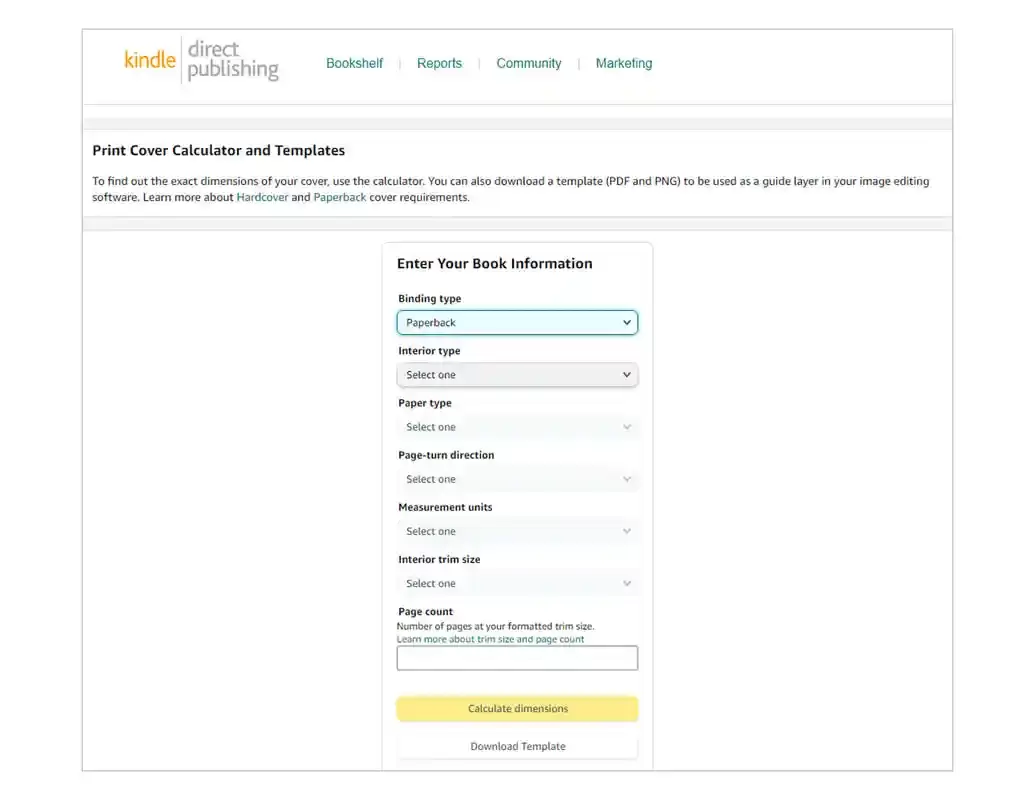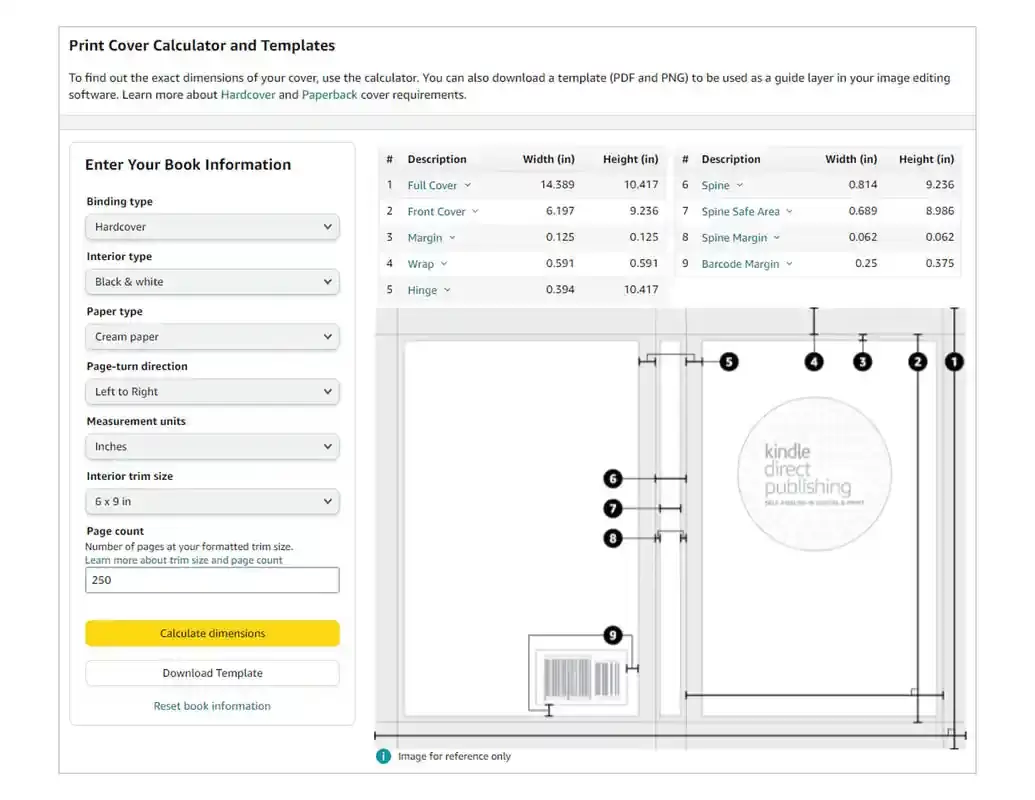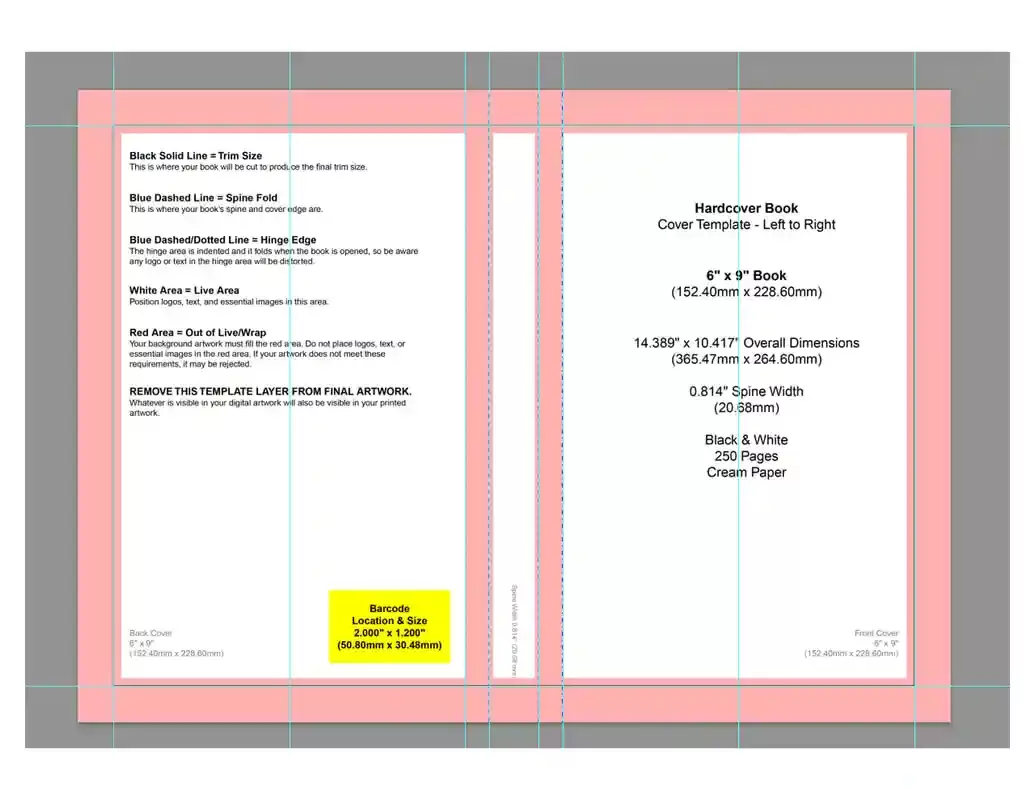|
Recently KDP took the long-awaited step of offering hardbacks as an option to their print on demand authors, they had trialed it with a large group of beta authors (we were creating covers for them some time ago) and with an obvious success, they rolled the option out to every KDP author. The hardbacks on offer are case wraps, which are hardbacks using a front and back board with the cover wrapped around the edges of the boards and glued in place, they offer another option for the author and one which many are utilizing with the launch of their own books. But getting a book cover design ready to use with their new hardback service is a little different to that of the existing paperbacks, but not too different. The first thing that we noticed when KDP rolled out this new option was the change to their template page, if you don’t already know, KDP gave you a couple of options when preparing a book cover design, they gave details of the thickness of each page (for both cream and white paper), you could then multiply by your page count to figure out the spine width, then add on the front and back page along with the trim areas. Or you could download one of their custom templates, this you could use to build your book cover on top of. The only thing with their templates is that they went up in batches of ten pages, in some cases this could lead to slight misalignment when looking at where the front page met the edge of the spine, in fairness it was very small, but it was still frustrating. There new template page now works for both paperback and hardback designs, it also asks for more information from the author and also creates the final template down to the specific page number (and not rounded up to the nearest ten). The image below shows the new page. When you go to the print cover calculator page, the first option it asks for is the binding type, you can either select ‘Hardback’ or ‘Paperback’, next is the interior, for most authors the selection will be black & white (unless of course you are printing a book which will have images or illustrations in). Moving on to paper type, this is the paper color that the book’s interior will be, as a rule, fiction tends to be on cream and non-fiction on white (but this is not set in stone). Please note that if you are printing a color book, you can only have white paper for the interior. A new option they have added for the template is the page-turn direction, depending upon the language that your book is going to be printed in, you can have the option for books which read from right to left. Next is the measurement for the book, giving you the option of both inches and millimeters, although when you download the final template, it will give you the dimensions in both. The last dropdown option is for the trim size of the book, now currently KDP are offering five different sizes for their hardbacks, these are: 5.5 x 8.5 in - 6 x 9 in - 6.14 x 9.21 in 7 x 10 in - 8.25 x 11 in Given time they may extend these to include other trim sizes, but for the moment it’s a good selection and offers the most common sizes for self-published printed books. The final option in the form is for the book’s page count, enter this and then hit the yellow ‘calculate dimensions’ button. The next screen will show you the dimensions for the book cover along with the location of trim areas and safe areas for the elements of your design. You can now click on the ‘Download Template’ button to download the PDF which you can then use to build your book cover design upon. Once downloaded, it’s still worth keeping the screen up, as this will give you the exact dimensions for each element as reference. The template can be opened up in Photoshop and then prepared for use as your book cover’s base, the red areas are parts of the book where nothing essential should be placed, so elements such as text, logos or important imagery/artwork should not go within these areas. The white areas are where the essential parts of the design will go, again, logos, text and important artwork needs to stay within these areas. The red areas to the left and right of the spine are larger than that of a paperback, these areas are the hinges of the book and join the boards to the book’s spine, you’ll also see the outer edges of the cover are a lot larger too, this area is the wrap and gets folded around the boards when gluing the cover to the actual book, it’s still important to have the artwork of the book to fill these areas, but note that it will be wrapped around the edges and most of it will be out of sight.
So, in review, the new hardback option for authors is a great addition to KDP’s current services, the new templates are more precise than before (which is great from a design perspective), but the next question we have to ask ourselves, when will they be printing dust jackets?
0 Comments
Your comment will be posted after it is approved.
Leave a Reply. |
JD&JCategories
All
Archives
July 2024
All information within this website (including its blog) is published in good faith and for general information purposes only. JD&J Design LLC does not make any warranties about the reliability and accuracy of this information. Any action you take upon the information in this website is strictly at your own risk. JD&J Design LLC is not liable for any losses and/or damages in connection with the use of this site and information.
|








